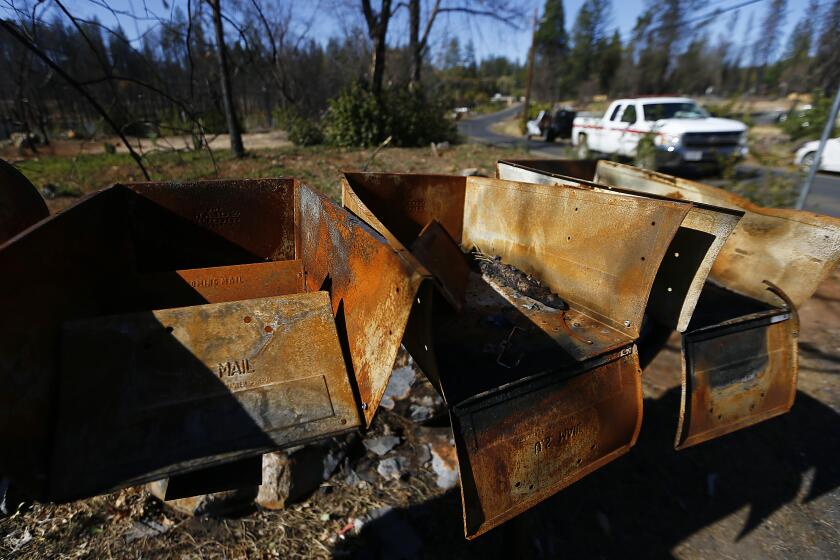1 in 10 loans past due
A record 10% of the nation’s mortgage-burdened homeowners fell behind on their loan payments or were in foreclosure during the third quarter, according to a survey released Friday by the Mortgage Bankers Assn., which said California and Florida were the biggest contributors to the worsening picture.
The percentage of loans at least a month overdue or in foreclosure was up from 9.2% in the second quarter and 7.3% a year earlier, the trade group said. In Florida, 7.3% of home loans were in foreclosure at the end of September. The figure was 3.9% in California and just under 3% for the nation.
Officials at the trade group said the number of loans entering foreclosure -- more than 1% of all residential mortgages nationally -- would have been higher if not for programs intended to save lenders and loan investors money by modifying the terms of troubled loans.
With the mortgage business already ripped apart by easy-money lending during the housing boom, the recession has added a more traditional creator of bad loans: losing a job.
In a grim report Friday, the government said U.S. employers cut 533,000 jobs in November, the weakest performance in 34 years, sending the jobless rate to a 15-year high of 6.7%. California unemployment is now well over 8%.
Combined with a 40% decline in California’s median home price, the faltering economy is resulting in the highest rate on record of troubled home loans actually going into foreclosure, said Jay Brinkmann, chief economist for the Mortgage Bankers Assn.
California represents 13% of the loans in the country, Brinkmann said, but is recording 19% of all new foreclosures.
“California has lost more than 100,000 jobs over the past year, compared to Michigan, the usual poster child for unemployment, which only lost 70,000,” Brinkmann said.
The group’s report shows conditions on Sept. 30. Since then, the stock market has tumbled and the economy has gotten weaker.
“Things are going to get worse before they get better,” said Thomas Lawler, a housing economist based in Virginia.
At first glance, California’s troubles seem little different from those anywhere else, because just under 7% of borrowers in both California and the nation are behind on payments. But Brinkmann said a clearer picture emerges when you compare the number of newly delinquent loans in one quarter with the number of loans entering the foreclosure process the following quarter.
That foreclosure “roll rate” was about 10% to 12% nationally in the 1990s and ran from 12% to 15% for most of this decade, Brinkmann said. The percentage is now 30% nationally but has reached 79% in California and 65% in Florida, he said.
“This is nothing like anything we’ve ever seen before,” Brinkmann said. “We were shocked when we saw the California roll rates.”
Delinquencies on all loan types, including fixed-rate prime loans to the worthiest borrowers, remain on the rise. But the bankers group said the most intense problems are attributable to boom-era adjustable-rate mortgages -- which include tricky pay-option loans to prime borrowers as well as the riskiest subprime loans.
“Prime and subprime ARMs continue to have the highest share of foreclosures, and California and Florida have about 54% and 41% of the prime and subprime ARM foreclosure starts, respectively,” Brinkmann said. “Until those two markets turn around, they will continue to drive the national numbers.”
If the report had a bright spot, it was that foreclosure starts tapered off a bit, perhaps reflecting more efforts by lenders and loan servicers to modify loans.
State data provided to The Times by the mortgage trade group showed that 92,711 homes in California entered foreclosure proceedings during the third quarter, down from 110,023 in the second quarter and about the same as the 92,729 in the first quarter.
--
The Associated Press was used in compiling this report.
More to Read
Inside the business of entertainment
The Wide Shot brings you news, analysis and insights on everything from streaming wars to production — and what it all means for the future.
You may occasionally receive promotional content from the Los Angeles Times.










